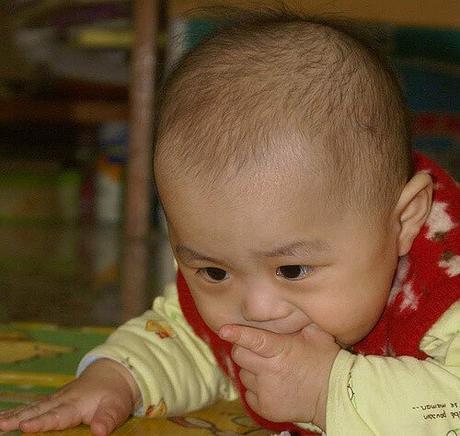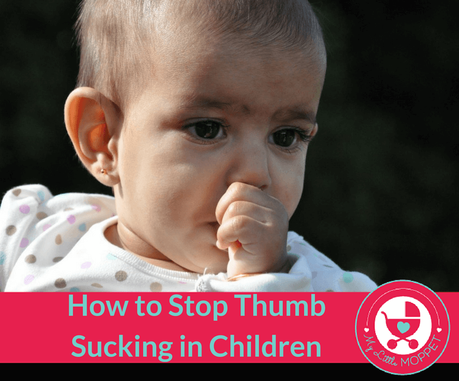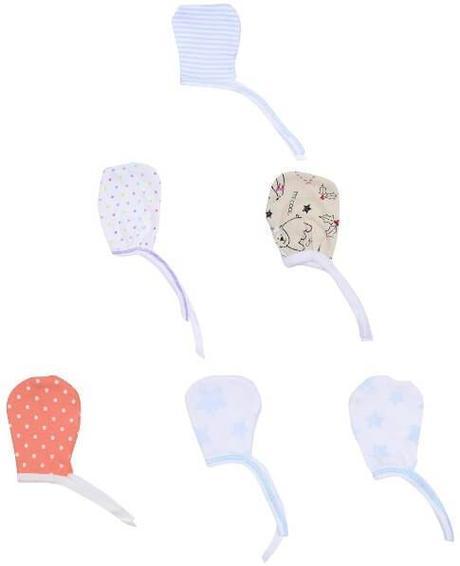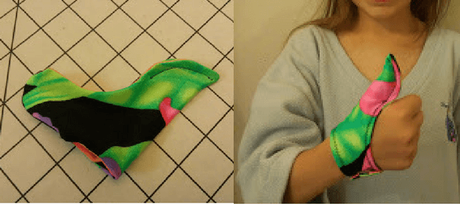Moms across the world have several common complaints, regardless or where they live. Some of these are their child's refusal to use the potty, picky eating or one that many find confusing - thumb sucking. Should they try to stop it or let it go on? Will their child continue the habit into their teens? All these questions are usually followed by the all important one - how to stop thumb sucking in children? Today, we're going to discuss everything about thumb sucking - why kids do it, whether it's bad for your child and what you can do about it.

How does the thumb-sucking habit start?
In the womb, many babies are found with their thumbs in their mouths during ultrasounds. Sucking is an ingrained instinct in baby mammals, since it is crucial to ensure that the baby is able to get food. But sucking is more than just for eating; 'non-nutritive sucking' is also important for comfort. It is how young babies deal with stress and are soothed. This explains why some babies continue to suck even after they've emptied a breast - it can be annoying for Mom, but it's comforting to the baby!

As babies grow, they may suck on their entire fist or their toes. Sucking the thumb also helps babies soothe their sore gums in the teething phase. Some children also use thumb sucking as a way to fall asleep. As they become toddlers, thumb sucking may continue to work as a pacifier, and toddlers often suck when they're scared, bored or sleepy. It may intensify when there has been a major change at home, like a new baby, moving homes, Mom going back to work, etc.
Possible Problems with Thumb-sucking
Basically, thumb sucking is just a source of comfort for infants, and is not a big deal at that age. However, if the habit persists into toddlerhood, it can create various problems such as these:
1. Damage to Teeth - While mild thumb sucking is generally harmless, vigorous thumb-sucking can affect dental health. It could change the alignment of the teeth that are coming in. The upper front teeth can push out and the lower front teeth may go in, needing braces later.
2. Broken Skin - Aggressive sucking can damage the child's delicate skin on the thumb, making it red or ridden with calluses. If the skin breaks, it can also result in infections around the nail bed.
3. Stomach Infections - Young kids are explorers and touch everything they see. When they put their fingers into their mouths, it creates an easy path for the transfer of germs from all the surfaces they've touched. This is a sure shot recipe for stomach infections, especially during the cold and flu season.
4. Reshaping of Jaw - A child's jaw is soft since it's still in the developing stage, and constant sucking can not just change the alignment of teeth, but it can reshape the jaw as well. The natural shape of the jaw may be altered in severe cases and can be hard to correct.
5. Speech Problems - In extreme cases, too much thumb sucking can change the development of the child's palate, in turn affecting speech. This is particularly true in case of kids who suck their thumbs as toddlers.
6. Bullying - One reason most parents have a problem with thumb sucking is because of the social stigma associated with it, since it's generally considered 'baby behavior'. Kids who suck their thumbs as they become school goers can be subject to bullying by their peers.

Studies show that 94% of children stop thumb sucking by the time they turn one, and the rest stop by the time they approach school age. However, some kids may still hold on to thumb sucking and it's understandable if you'd like to take steps to curb this habit. Punishing, threatening or pressurizing the child can only backfire, so you need to be gentle and loving about it. Here are some simple ways to stop thumb sucking in children.

1. For many children, thumb sucking is something they automatically resort to without thinking. When you notice your child is about to suck his thumb, distract him with something. Preferably, engage him in activities that require both hands. You could even have a 'Thumb Sucking Kit' with stuff to occupy both his hands!
2. If your child uses thumb sucking as a means to calm down, teach her alternate methods to do the same. Toddler yoga is a great idea, as is calming music. Gradually, she'll learn to soothe herself without using her thumb!

3. If teething is the issue for your baby, offer her teethers instead. You can try out any of these natural methods to relieve teething trouble in babies.
4. Identify the times of the day when your little one sucks his thumb. It may be around meal time, or more during some seasons or during boring afternoons when big brother isn't home from school yet. Whatever it may be, find a way to engage him before the thumb sucking starts. Feed him before he starts feasting on his thumb, and start an activity before he gets bored.

5. For little babies, mittens can curb the habit from the start. Mittens with elastic are very easy to take off, so go for ones with strings to tie up. You might have to face a bit of screaming initially, but it'll soon die down!

6. For little thumb suckers who are too smart for mittens, try a thumb guard, which is a piece of fabric that keeps the thumb covered, allowing full use of the hand otherwise. A fabric-covered thumb is no fun to suck! You can make your own thumb guard from this tutorial at The Wannabe Domestic Overachiever.
7. Another nasty, but effective method is putting lime juice or vinegar on the thumb. The taste will put kids off thumb sucking! Make sure you don't do this as a punishment but rather as a reminder.
8. For older kids, try positive reinforcement. Create a chart to track the days your child goes 'thumb-free' and promise a reward after reaching a certain milestone. And then, be sure to keep your promise!
Have regular dental checkups to make sure the teeth are developing properly and that there is no misalignment. Any problem that is detected early is easier to correct. Do try these tips and let us know which one worked with your little one!
